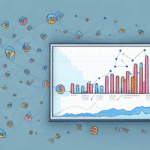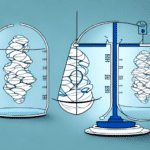Overcoming E-commerce Challenges: Optimizing Customer Acquisition Costs
E-commerce businesses today face a myriad of challenges in acquiring new customers. With the online marketplace becoming increasingly saturated, attracting and retaining customers has become both difficult and expensive. This article delves into the significance of Customer Acquisition Cost (CAC) in e-commerce, identifies the primary obstacles businesses encounter in this domain, and presents effective strategies to reduce CAC while boosting conversions. Additionally, we examine the roles of SEO and paid advertising, and outline metrics to measure the success of your customer acquisition initiatives.
Understanding the Importance of Customer Acquisition Costs in E-commerce
Customer Acquisition Cost (CAC) represents the total expenditure on sales and marketing activities required to acquire a new customer. In the realm of e-commerce, CAC is a pivotal metric that directly influences profitability. High CACs can erode margins and stifle growth, making optimization of CAC essential for the sustainable success of any e-commerce enterprise.
To effectively optimize CAC, businesses should prioritize customer retention. Repeat customers inherently have lower acquisition costs since they are already acquainted with the brand and demand less marketing effort. Invest in strategies that foster customer loyalty, such as:
- Personalized marketing campaigns
- Loyalty and rewards programs
- Exceptional customer service
Another critical factor influencing CAC is the quality of traffic to your e-commerce website. Aim to attract high-quality traffic that is more likely to convert into paying customers through:
- Targeted advertising
- Search Engine Optimization (SEO)
- Social media marketing
Focusing on drawing the right kind of traffic can significantly reduce CAC and enhance overall profitability.
Key Challenges in Customer Acquisition for E-commerce Businesses
E-commerce companies encounter several hurdles in customer acquisition, including:
- Intense Competition: The crowded online marketplace makes it challenging and costly to attract and retain customers.
- Elevated Customer Expectations: Providing superior service and product offerings to meet and exceed customer expectations.
- Rapid Technological Advancements: Staying abreast with swift technological changes and effectively integrating them into business operations.
- Changing Market Trends: Adapting to fluctuating market trends and evolving consumer behaviors.
Moreover, maintaining a robust online presence is imperative. To attract and keep customers, e-commerce websites must be:
- Intuitive and easy to navigate
- Visually appealing and engaging
- Optimized for search engines
Achieving and sustaining these qualities necessitates continuous investment in website design, development, and maintenance.
Another significant challenge lies in navigating the intricate landscape of online advertising and marketing. With a plethora of channels available—such as social media, email marketing, and paid search—it can be arduous to decide where to channel efforts. Furthermore, advertising expenses can escalate rapidly, posing a challenge for smaller e-commerce businesses striving to compete with larger counterparts.
Customer Lifetime Value (CLTV) and Its Role in Optimizing CAC
Customer Lifetime Value (CLTV) is the total revenue a customer is expected to generate throughout their relationship with a business. Understanding CLTV enables businesses to optimize CAC by pinpointing the most profitable customer acquisition channels and concentrating efforts on those areas.
To enhance CLTV, implement loyalty programs. By rewarding customers for repeat business, companies encourage continuous purchasing, thereby increasing CLTV. Additionally, CLTV can help identify the most valuable customers, allowing for better resource allocation towards:
- Personalized promotions
- Exclusive discounts and offers
It is important to recognize that CLTV is dynamic—it evolves as customer behavior and preferences change. Regular analysis of CLTV and subsequent strategy adjustments are crucial to maintain and grow it, thus maximizing revenue and optimizing CAC.
The Impact of Social Media on Customer Acquisition Costs
Social media platforms are potent tools for customer acquisition, but they can also contribute to increased costs if not leveraged strategically. E-commerce businesses should:
- Concentrate efforts on platforms where target customers are most active
- Utilize user-generated content and collaborate with influencers
- Implement social media advertising to lower CAC while boosting conversions
Regular analysis of social media metrics is essential to evaluate the effectiveness of customer acquisition strategies. Track indicators such as:
- Engagement rates
- Click-through rates (CTR)
- Conversion rates
Leveraging this data helps identify the most valuable platforms and tactics, enabling optimization of social media campaigns to reduce CAC over time.
Effective Strategies to Reduce Customer Acquisition Costs While Boosting Conversions
Implementing the right strategies can help minimize CAC while enhancing conversion rates:
- Personalize Marketing Efforts: Customize marketing messages to make customers feel recognized and understood.
- Leverage SEO: Drive organic traffic by optimizing your website for search engines.
- Strategic Paid Advertising: Focus on channels that offer the highest return on investment (ROI).
- Utilize Social Media: Engage with audiences and build relationships through valuable content and interactions.
- Enhance Website User Experience: Ensure your website is user-friendly and provides a seamless experience to increase conversions.
Conducting user testing and implementing necessary improvements can lead to a website optimized for conversions, reducing reliance on costly advertising campaigns.
The Importance of Personalized Marketing in Reducing CAC
Personalized marketing is highly effective in reducing CAC while increasing conversions. By targeting customers with tailored messaging and offers, businesses can:
- Make customers feel valued
- Boost brand loyalty
- Identify and concentrate on the most profitable acquisition channels
Personalized marketing enables businesses to customize messaging for specific customer segments by analyzing customer data. This not only enhances the effectiveness of marketing efforts but also fosters stronger customer relationships.
Moreover, personalized marketing differentiates businesses in a crowded marketplace by creating unique and memorable brand identities.
The Role of SEO in Lowering Customer Acquisition Costs
Search Engine Optimization (SEO) is a highly effective method for attracting customers organically and reducing CAC. By optimizing their website for search engines, businesses can:
- Increase visibility in search engine results pages (SERPs)
- Attract more qualified and relevant traffic
- Enhance trust and credibility with the target audience
SEO is a cost-effective strategy that offers long-term benefits. Consistently producing high-quality, optimized content helps businesses establish themselves as industry leaders, attracting a loyal customer base and reducing the cost associated with acquiring new customers.
According to a 2023 report by Moz, companies that prioritize SEO experience a 14.6% conversion rate, compared to only 1.7% for traditional outbound methods.
Maximizing the Effectiveness of Paid Advertising in E-commerce
Paid advertising can substantially boost sales and conversions when employed strategically. E-commerce businesses should:
- Concentrate on channels that offer the highest ROI
- Create compelling advertisements that resonate with target customers
- Continuously measure and analyze advertising efforts to optimize returns and reduce CAC
Understanding the customer journey is crucial for tailoring ads effectively. For example:
- Retarget customers who have previously visited the website with incentives like discount codes or free shipping offers
- Introduce brand awareness and unique value propositions to potential customers in the awareness stage with informative and engaging advertisements
By aligning advertising strategies with different stages of the customer journey, businesses can enhance ad performance and reduce CAC.
Retargeting: A Cost-effective Strategy for E-commerce
Retargeting is a powerful strategy to lower CAC while increasing conversions by targeting customers who have already shown interest in products or services. Retargeting helps:
- Convert more sales at a reduced cost
- Build brand awareness and foster loyalty
The benefits of retargeting include:
- Delivering personalized marketing messages based on previous interactions
- Re-engaging customers who abandoned shopping carts or left the website without making a purchase
- Encouraging repeat visits and purchases with special offers or discounts
Measuring the Success of Your Customer Acquisition Efforts
Evaluating the success of customer acquisition initiatives is critical. Monitor and analyze key metrics such as:
- Customer Acquisition Cost (CAC)
- Customer Lifetime Value (CLTV)
- Conversion Rates
- Return on Investment (ROI)
Employing data-driven decision-making allows businesses to continuously adapt and optimize customer acquisition strategies, ensuring sustained growth and profitability.
Data-Driven Decision Making for Optimizing CAC
Adopting a data-driven approach is essential for optimizing Customer Acquisition Costs in e-commerce. Utilize data to:
- Measure and assess the performance of marketing campaigns
- Identify the most effective acquisition channels
- Refine personalized marketing efforts to target the right audience
By continually refining strategies based on empirical data, businesses can effectively reduce CAC and enhance profitability over time.
Case Studies: Success Stories of E-commerce Businesses Optimizing CAC
Many successful e-commerce businesses have optimized their customer acquisition strategies to drive growth and profitability. Analyzing these case studies provides valuable insights and lessons that other businesses can apply to their own strategies. For example:
- Example Company A: Utilized a comprehensive SEO strategy that increased organic traffic by 50%, resulting in a 30% reduction in CAC.
- Example Company B: Implemented a personalized email marketing campaign that boosted customer retention rates by 20%, significantly lowering overall CAC.
These examples underscore the importance of strategic marketing efforts in optimizing customer acquisition costs.
Common Mistakes to Avoid When Optimizing Customer Acquisition Costs
E-commerce businesses should steer clear of several common pitfalls when optimizing customer acquisition strategies, including:
- Focusing excessively on low-cost acquisition channels at the expense of quality traffic
- Neglecting to personalize marketing efforts, leading to generic and ineffective campaigns
- Failing to conduct thorough data analysis, resulting in misguided strategy decisions
- Chasing fleeting trends instead of concentrating on long-term strategic optimization
In summary, optimizing customer acquisition costs is vital for success in the competitive e-commerce landscape. By concentrating on personalized marketing, SEO, paid advertising, and data-driven decision-making, businesses can effectively reduce CAC while fostering growth and enhancing profitability over time.




















